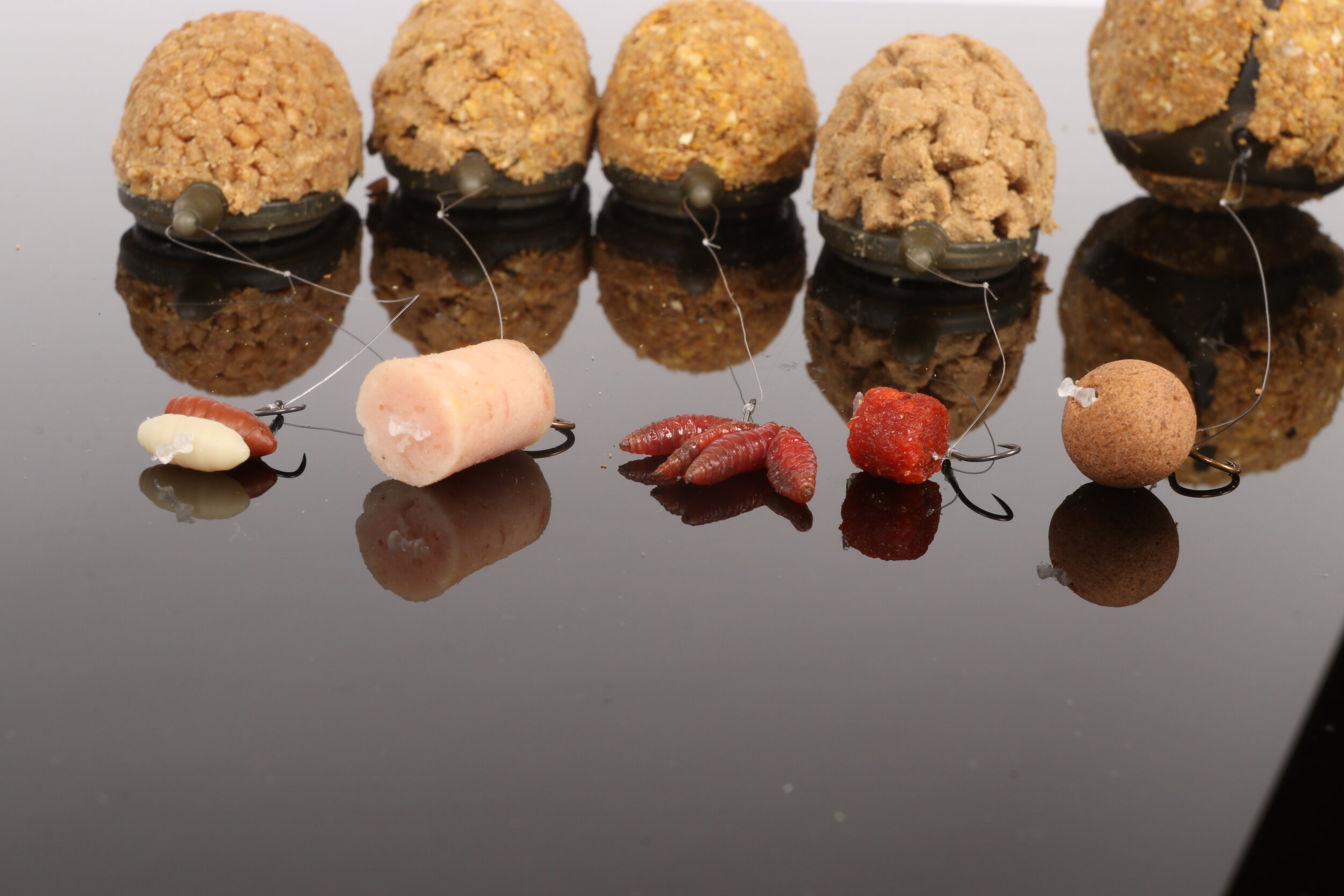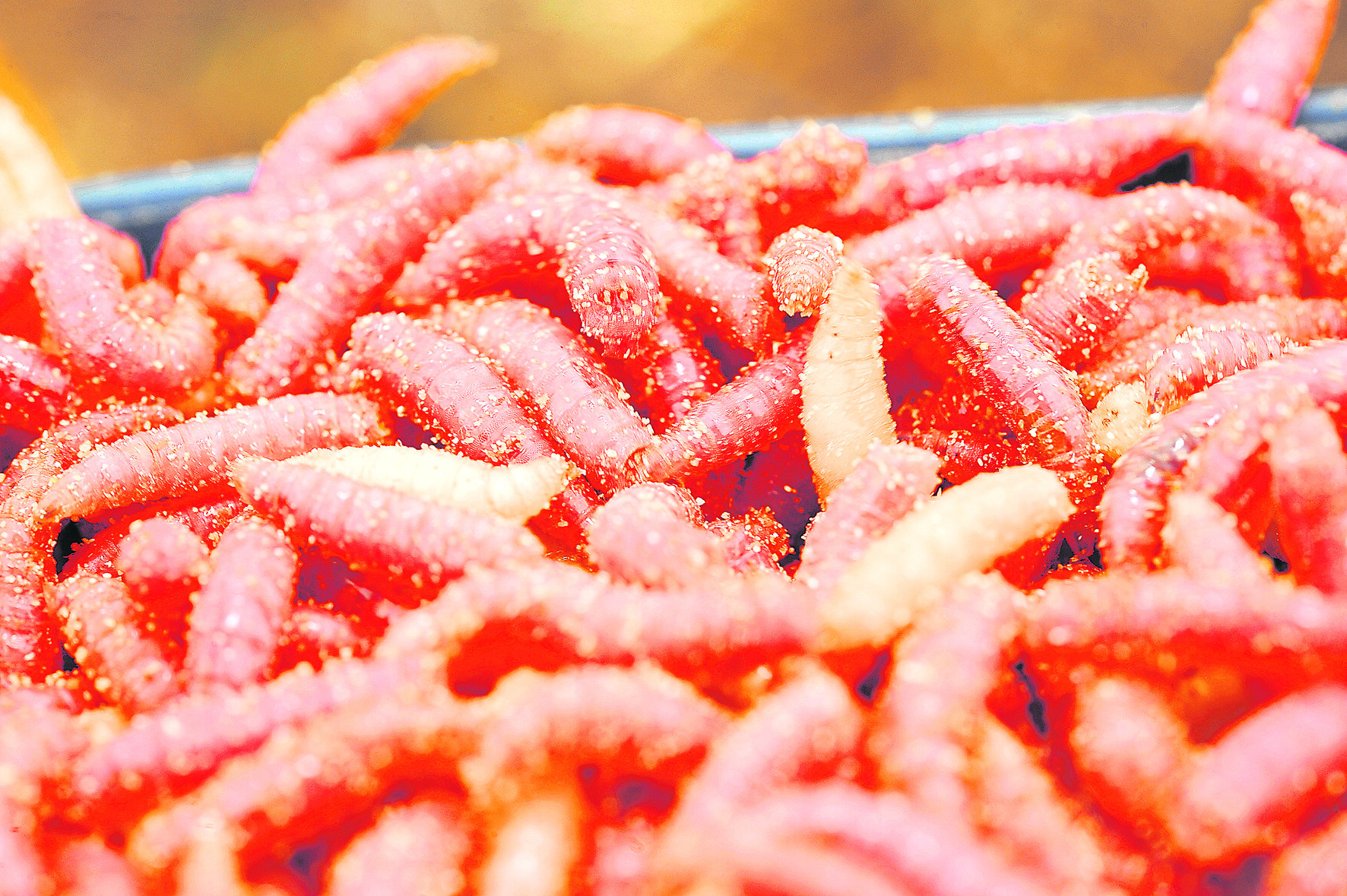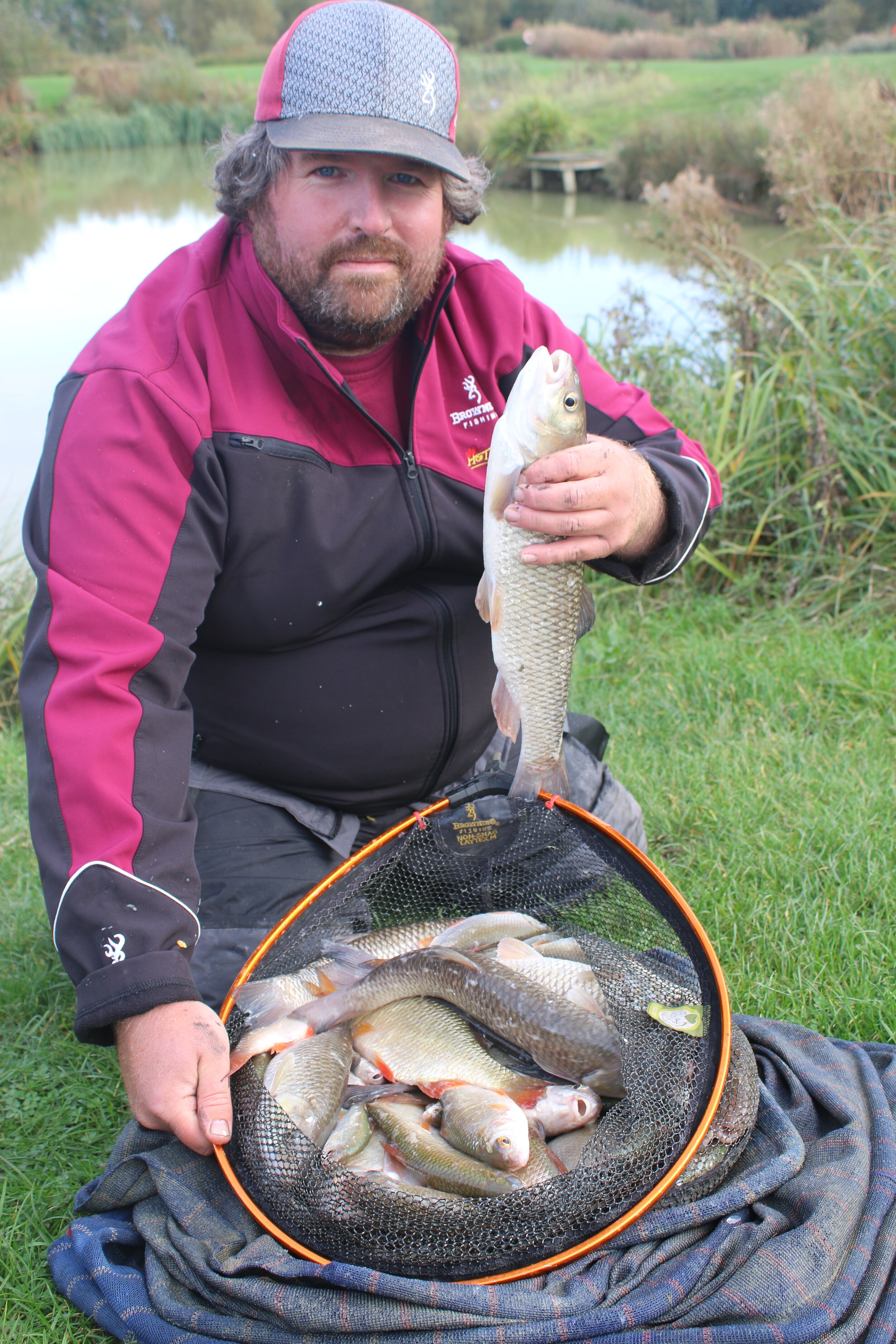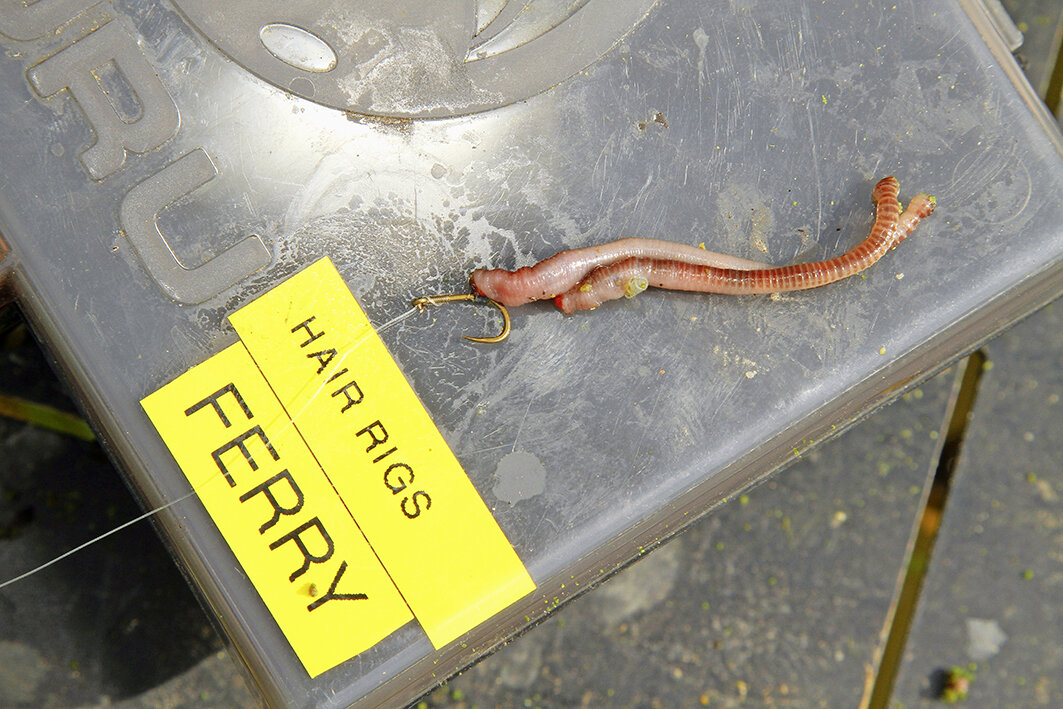Land the biggest F1s with this amazing paste
If you thought paste was a bait reserved for catching big carp then you’d be missing a big trick – that’s the verdict of match ace Steve Gregory who is famed for his antics with the stuff across a wide variety of commercial fisheries across the UK.
Paste still catches ‘lumps’, but as F1s become more common in our waters, Steve has adapted his approach to catch the lion’s share of a finicky species more associated with smaller hookbaits.
He’s perfected paste fishing for F1s so much that he can keep pace with anglers playing the numbers game fishing pellets and maggots. It’s all to do with the stamp of fish that paste produces on waters holding fish ranging from ounces to 2lb.
“Fish pellets and you’ll catch, but I’ve found the size can vary greatly,” Middy-backed Steve explained.
“My paste sorts out the bigger F1s and it’s rare to get one under 1lb. There are lots of myths surrounding fishing paste and I think that can put anglers off using it. They shouldn’t be worried because once you master a few simple basics it’s a very easy method to fish.”
To demonstrate, the former British match record-holder invited us to Falcon Lake at Westwood Lakes near Boston, home to thousands of F1s of all sizes to show paste’s power.
Paste consistency
“Groundbait pastes are a waste of time because they dissolve,” Steve said bluntly. “That defeats the point because I want my hookbait to stay on for as long as it takes to get a bite. People think that I have a magic paste mix, but it’s just my original Miracle Paste that I’ve been using for years. However, I mix it a few days in advance because this gives me the consistency that I want.”
“It has to be soft enough to strike through, but stringy enough to stay on when fish are knocking into the line or mouthing the bait. I’ll prepare plenty of paste because, on places like Falcon Lake, you could be getting hundreds of bites and so getting through a fair bit. Two bags makes enough for a hectic session.”
Hookbait size
“It’s important to match your hookbait to the size of fish. Because F1s are the target, there’s no place for massive lumps the size of your thumb!” Steve said.
“I don’t use little pea-sized bits either. Typically, the bait is around the size of a £1 coin. That’s large enough to catch bigger F1s.”
Fishing short
“I’ll fish a top kit if I can to save time on waters where every second counts,” Steve said.
“Having to unship a section of pole each time can lose you 15 minutes of fishing time. That can work out at over 20 fish you miss out on catching on days when the fishing it good. Fishing short puts you on top of the near shelf on a flat bottom, which is a must for paste fishing.”
Spotting a bite
“Don’t be tempted into striking when the float goes under – it’ll do all sorts of things as fish knock into the line or mouth the bait,” he advised.
“You’re looking for a specific indication on the float. This will be a sharp, positive ‘dig’ on the float as a fish gets hold of the paste properly. Even then you will foul-hook a lot of fish because of the number in the swim. By fishing relatively light hollow elastic, I can get these foul-hookers in. If you aren’t connecting with bites, hold the float tight to the line and you’ll see it fly under!”
Big hooks still rule
“Fishing paste on a size 14 hook is a waste of time because you won’t convert bites into hooked fish. You still need to fish a big ‘anchor’ and for me that’s a size 12 Middy 83-13 pattern. That’s plenty big enough to hold the paste in place and still strike through and get a good hook hold,” he explained.
“Lines are 0.14mm Hi-Viz fished straight through with that light elastic being Middy’s 8-10 hollow grade.
“Finally we should talk about floats and I go big on this front too with a 0.7g handmade model that’s got a relatively slim body. I’ve seen blokes fishing paste with no shot on the rig, instead relying on the paste to cock the float. That’s nonsense and all it does is see any tow or wind on the lake put pressure on the hook and ultimately rip the paste off. I also leave the whole bristle showing to read bites better.”
Top margin baits you can use right now!
With spring now here Daiwa's Will Raison offers some timely advice for the best margin baits to be using right now. Here are his top baits to use when fishing for big carp down the margins.
Sweetcorn
Forget using a single grain of corn in the margins – two pieces will get you more bites and bigger fish, working on the principle that a carp will spot two bits of yellow corn far quicker than just the one, especially when the bottom is being churned up by feeding fish. Corn is also a heavy bait that won’t be washed about and is hard for little fish to rip off the hook.
Dead Red Maggots
Without a doubt the number one margin bait! I cram up to seven or eight dead reds on to the hook to create a massive hookbait that no carp can miss or refuse.
Deads are very soft and still look like their live counterparts to the fish, but don’t wriggle. When fishing over a large helping of dead reds, carp will move in and hoover up the lot, including the hookbait. They’re a very light bait that are easy for the fish to suck in.
To make dead red maggots I simply clean the sawdust off a few pints and put them in a plastic bag, remove all the air and seal them tightly. The maggots then go into the freezer for three days to ensure they’re dead – I have frozen them for one day before, only to see them come back to life!
Worms
These are venue-specific baits in my experience and tend to work on waters that see a lot of chopped worm and caster used by anglers– the carp get a real taste for them.
They’re also great if there are a lot of roach and rudd in the peg that are smashing maggots to bits. I’ll fish one or perhaps two for a big bait. They’re also worth having in reserve as a change bait when using maggots and groundbait, as the bites can be very savage.
Luncheon Meat
Meat can be very cyclical, in that it works over any other bait for spells during the spring and autumn. However, in July and August I would still have some 10mm cubes with me to slip on to the hook as a change bait.
Dr Paul Garner's 10-minute make | Grilled meat
In hot weather luncheon meat can become very soft as the fat in it melts. To make a much tougher bait, try frying the meat first. This cooks out the fat and puts a tough skin around the bait.
Cut a tin of luncheon meat into three-quarter-inch slices.
Heat up two teaspoonfuls of cooking oil in a frying pan.
Add a teaspoonful of garlic powder to the pan.
Fry the meat for two to three minutes on each side.
Break the meat into chunks to give you the perfect bait size.
Prepare your pellets with Tommy Pickering
Pellets are without doubt the most effective bait on commercials at this time of the year, but a lot of them float initially when they come out of the bag. They may only stay on the surface for 10 seconds before dropping to the deck, but in even the slightest breeze this will lead to your bait drifting out of the swim, and sending fish with it. Take a look at this simple trick to make every single pellet sink the second it hits the water.
Take a handful of 4mm or 6mm pellets and place them in a bait box full of water. You will instantly notice that a proportion of them float. Once you have done this, pour the water and wet pellets away, wipe the box dry and add the rest of the bag of pellets to the tub.
I used to add sunflower oil to my pellets but now use a product that’s even more effective. To every pint of bait I use I add a capful of Sonubaits Clear Pellet Oil. It comes in three flavours – F1, Krill and Scopex – and all three release plenty of attractive scent into the water.
Place the lid back on the bait tub containing the pellets and shake the contents around vigorously for approximately 10 seconds. This will make sure that the oil spreads evenly, and that every single pellet gets a good coating.
Take the lid off and the pellets are ready for use straight away. The key difference to adding water is that the oil will not make your pellets swell and if you don’t use them all that session, you can take them home and they won’t go mouldy.




































